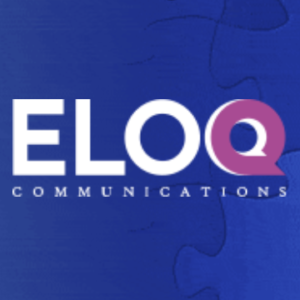
In my previous blog post, we explored how consumer intelligence has transitioned from passive social listening to active consumer insights. Today, we’ll dive deeper into the keys that unlock a successful transition and shed light on the transformative outcomes that great consumer intelligence can bring to businesses. Again, this post is my take based on Talkwalker’s “The future of consumer intelligence” white paper.
Keys to Success: Transitioning from Passive to Active Consumer Insights
- Clarity – The Foundation of Success
Success in transitioning from passive to active Consumer Insights starts with clarity. It’s about separating valuable insights from the noise and ensuring that the data you collect is reliable and actionable. It’s vital to have a robust data foundation, as it forms the bedrock upon which accurate insights and informed decision-making rest.
For example, consider a retail business expanding into e-commerce in Vietnam. To ensure clarity, they invest in a comprehensive data collection and analysis system. This data serves as the foundation for their strategies, enabling them to efficiently allocate resources, reduce costs, and maximize their return on investment.
Clarity also entails being cautious of promises that sound too good to be true. Fully automated solutions might seem appealing, but in many cases, complex data sources require a human component. Having a strong customer service and professional service team is essential to help organizations navigate the transition effectively.
- Evolution – Expanding Horizons
The transition to active Consumer Insights isn’t confined to a single department or team. It’s a transformation that impacts various roles and areas across an organization. This includes customer experience, customer engagement, insights, marketing, innovation, sales, HR, and product development.
Imagine a multinational company with operations in Vietnam. To successfully evolve, they need to define clear objectives and ensure alignment across different departments. This alignment is essential to access and collaborate on data from various sources, like customer feedback, sales data, and marketing insights, and to leverage AI and data segmentation capabilities effectively.
The evolution of insights and data democratization often starts with small-scale implementations. It’s about introducing the concept of active Consumer Insights to different teams and gradually expanding to incorporate more data sources.
- Dynamic – Aligning Data with Business Drivers
The key to success lies in aligning data with your primary business drivers. This alignment enables organizations to generate valuable insights faster, leading to better-informed decisions.
For instance, consider an e-commerce platform in Vietnam. By aligning their data with key business drivers like user behavior, website performance, and product preferences, they can swiftly adapt to changing trends and optimize their operations. If they notice a surge in mobile shopping, they can allocate more resources to improving their mobile app and user experience.
In this context, AI plays a critical role. AI not only ensures data reliability but also helps organizations keep their insights relevant to their business drivers.
- Filter – Categorize and Segment
Not all data is created equal. It’s vital to categorize and segment data based on its source and relevance. This helps organizations manage and make sense of the vast amount of data available.
Consider a digital marketing agency in Vietnam. To effectively leverage data, they categorize it into creators (influencers, media publishers), consumers (social media users), and customers (feedback from clients). By segmenting consumers by demographics or interests, such as foodies or millennials, they can deliver more targeted and effective marketing campaigns.
Using platforms that offer the ability to filter data based on specific business objectives and use cases can significantly enhance an organization’s ability to utilize available information.
The Outcomes of Great Consumer Intelligence
- Evidence-based Decision Making – Consumer Intelligence empowers evidence-based decision-making across various roles and areas within an organization. This results in more accurate insights, improved strategic planning, and a deep understanding of customer needs and preferences.
- Strengthening Understanding – A holistic view of consumer behavior enables businesses to create stronger relationships with customers, drive customer loyalty, and achieve sustainable growth.
- Speed, Agility, and Democratization of Data – Rapid access to data, agility in adapting to changing trends, and democratization of data foster a culture of continuous learning and inclusive decision-making.
- Promoting Collaboration and Integration – Consumer Intelligence encourages collaboration, breaks down silos, and enhances customer-centric decision-making, ultimately maximizing the value delivered to customers.
- Trust in Data – Data trust is vital for making informed decisions and understanding audiences at a granular level.
- Unified Consumer Feedback Stream – Consolidation and integration of feedback and insights from various sources into a single system bring several benefits, including real-time monitoring, centralized data for analysis, and enhanced customer-centric decision-making.
These keys and outcomes not only apply to businesses in Vietnam but also to organizations globally. They represent the foundation for success in transitioning from passive social listening to active Consumer Insights, empowering organizations to thrive in an ever-changing digital landscape.
X-posted on EloQ’s blog











